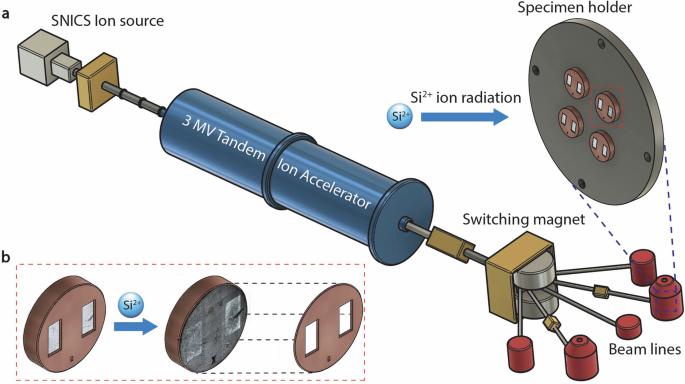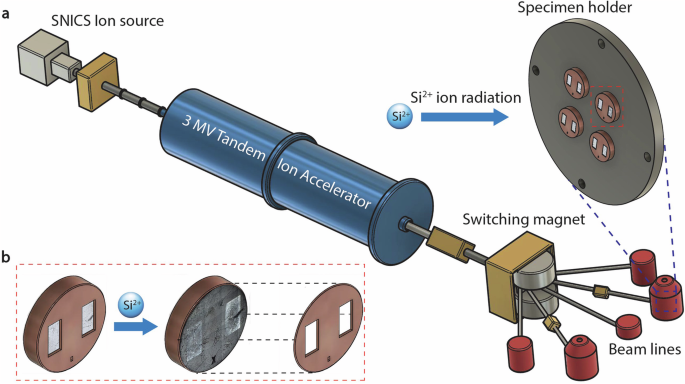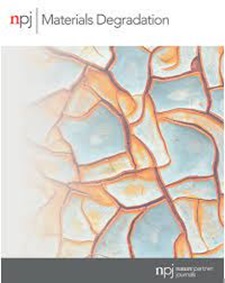Silicon ion radiation as a viable surrogate for emulating neutron radiation damage in silicates
IF 7.6
2区 材料科学
Q1 MATERIALS SCIENCE, MULTIDISCIPLINARY
引用次数: 0
Abstract
Nuclear power plants are aging around the world, and a precise assessment of irradiation damage in their components is needed. One key component, concrete, and specifically the silicates in its aggregates, can undergo significant expansion upon neutron radiation, which can lead to cracking and, ultimately, structural failure. However, assessing and predicting the extent of damage via neutron radiation is challenging due to reasons such as residual radioactivity and, most importantly, the high time involved. Here, we evaluate whether ion radiation can be a viable surrogate. Specifically, by employing Si2+ ion radiations and a comprehensive multi-modal imaging protocol, we report mineral-specific responses for key silicates such as quartz, albite, anorthite, and microcline. We find that 10 MeV Si2+ ions result in mineral expansions that are remarkably comparable to neutron radiation equivalent expansions (R2 = 0.86, RMSE = 1.29%), opening up pathways towards rapid assessment of silicates subject to irradiation.


硅离子辐射是模拟硅酸盐中子辐射损伤的可行替代物
世界各地的核电站正在老化,需要对其部件的辐照损伤进行精确评估。其中一个关键部件--混凝土,特别是其骨料中的硅酸盐,在中子辐射下会发生显著膨胀,从而导致开裂,最终导致结构失效。然而,评估和预测中子辐射的破坏程度具有挑战性,原因包括残留放射性,最重要的是涉及的时间较长。在此,我们评估了离子辐射是否可以作为一种可行的替代方法。具体来说,通过使用 Si2+ 离子辐射和全面的多模态成像协议,我们报告了石英、白云石、阳起石和微绿柱石等主要硅酸盐的特定矿物响应。我们发现 10 MeV Si2+ 离子导致的矿物膨胀与中子辐射等效膨胀相当(R2 = 0.86,RMSE = 1.29%),为快速评估受辐照的硅酸盐开辟了途径。
本文章由计算机程序翻译,如有差异,请以英文原文为准。
求助全文
约1分钟内获得全文
求助全文
来源期刊

npj Materials Degradation
MATERIALS SCIENCE, MULTIDISCIPLINARY-
CiteScore
7.80
自引率
7.80%
发文量
86
审稿时长
6 weeks
期刊介绍:
npj Materials Degradation considers basic and applied research that explores all aspects of the degradation of metallic and non-metallic materials. The journal broadly defines ‘materials degradation’ as a reduction in the ability of a material to perform its task in-service as a result of environmental exposure.
The journal covers a broad range of topics including but not limited to:
-Degradation of metals, glasses, minerals, polymers, ceramics, cements and composites in natural and engineered environments, as a result of various stimuli
-Computational and experimental studies of degradation mechanisms and kinetics
-Characterization of degradation by traditional and emerging techniques
-New approaches and technologies for enhancing resistance to degradation
-Inspection and monitoring techniques for materials in-service, such as sensing technologies
 求助内容:
求助内容: 应助结果提醒方式:
应助结果提醒方式:


